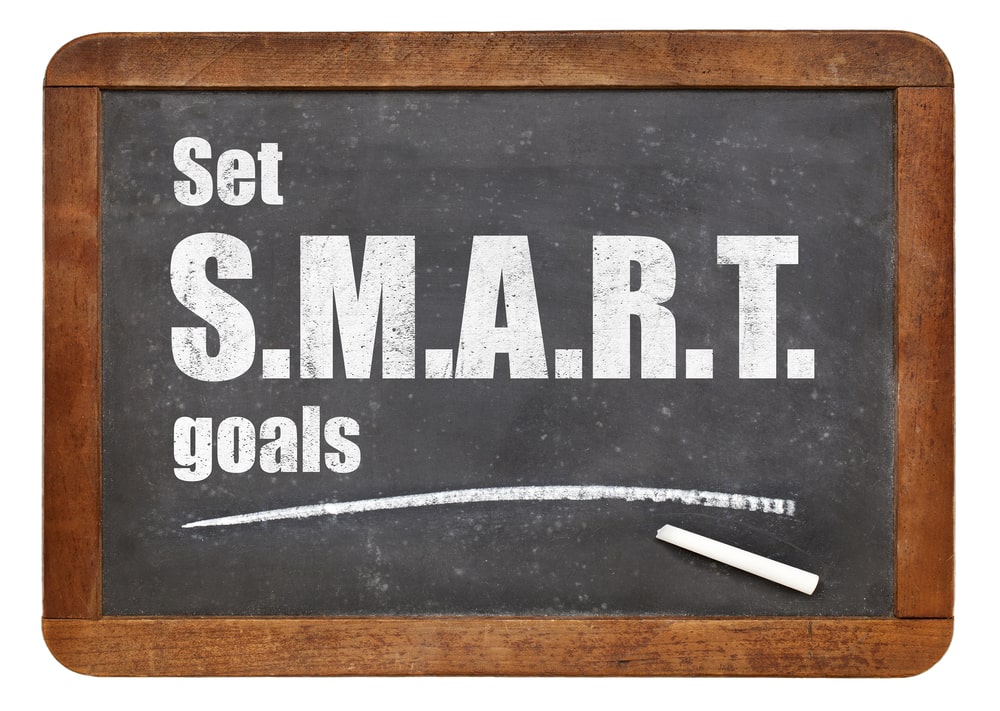Corporate events can range from team-building activities to large conventions. While they may seem fun to bring employees together, their purpose goes much deeper. A clear objective for your corporate event is crucial to ensure its success. Without one, the event may lack direction and fail to meet its goals.
This post will discuss the importance of setting an objective for your corporate event and how it can benefit the company and its attendees. We’ll also give some examples of common event objectives and tips on setting one for your own event.
Before diving into the tips and examples, it’s important to understand why setting an objective is so crucial. Corporate events are more than just big parties—they serve a purpose and can benefit the company in numerous ways. Here’s how:
Attract The Right Audience
“Having a clear objective for your event helps attract your target persona.”
It ensures that attendees will likely be interested in the event’s subject matter. They’ll enjoy themselves and help contribute to the ambiance.
For example, let’s say the objective is to educate employees on new company policies. In that case, targeting employees would be better than outside clients or investors.
Additionally, your audience can also help determine the event’s objective. If your company is launching a new product, inviting potential clients and investors to demo the product can be a valid objective for the event.
Once you determine your objective, it is extremely helpful to provide an itinerary to your guests’ so they have a clear idea of timeline and attire. This helps to manage expectations and ensure your guests take away from the event what you intended.
Help With Planning The Program
Once you have a clear objective, planning the event program becomes much more manageable. You’ll know what type of speakers or activities are needed to achieve the objective and can work on creating a cohesive flow for the event.
“You might also be able to save time and resources by focusing on what’s necessary for the event’s success rather than getting sidetracked by unnecessary details.”
With an objective, it may be easier to determine what should be included in the event program. You might hit a blank when thinking about speakers or activities and end up with an unorganized event.
Goals can also guide budget allocation. For instance, spending more on entertainment and activities would make sense if the objective is to increase employee morale. Your program and budget will ultimately support the event’s goal and contribute to its success.

Theme And Branding
“The objective can inspire the overall look and feel of the event. That includes invitations, promotional materials and decor.”
It allows you to convey the event’s purpose and helps create buzz among attendees. Not every corporate event needs a theme, but if your objective lends itself to one, it can add excitement and make the event more memorable.
On the other hand, branding will stay the same with each event and is more about creating a consistent image for your company.
Your objective can still contribute to proper branding by aligning with the program and relating to your company’s values. During a product launch, giving out swag with the product’s branding can help promote it.
Evaluate Your Success
Your objective serves as a benchmark for evaluating the success of the event. Did it meet its goals and attract your target audience? Did attendees have a positive response to the event’s program? Answering these questions can give valuable insights into what worked well and what can be improved for future events.
We’ll discuss measuring success in more detail later in this post.
How To Set Goals For Corporate Events
Now that we’ve covered the importance of setting an objective, let’s discuss how to do it effectively. Here are some key steps to set a clear and achievable objective.
Establish The Big Picture
“Just as forgetting about metrics can lead to a lackluster event, tunnel vision can also be a problem. It would help if you kept a balanced approach by considering both the bigger picture and specific KPIs.”
The former should be describable in one sentence and relate to your company’s mission or overarching goals. For example, a big-picture goal could be “enhancing employee engagement and morale.” It can also be helpful to consult with higher-ups, such as department heads or executives. Ensure that the event aligns with their vision for the company.
From there, you can start to break down specific KPIs. These might be things like increasing employee satisfaction by a certain percentage or attracting a certain number of attendees.
Create S.M.A.R.T Goals
You may have heard of the S.M.A.R.T. acronym, a helpful framework for setting objectives. The goals for your event should be:
Specific: In contrast to the big picture, the objective should clearly state its goal. Try to avoid vague terms and be as detailed as possible. A specific goal might be “Invite 1000 guests to our next conference.”
Measurable: The objective should have a quantifiable metric to measure success. You might want to increase employee satisfaction by 10%. That way, you’ll know if you have achieved the goal. Measurable goals also mean that you’ll have usable data to analyze that will potentially be useful for future events
Achievable: Your objective should be realistic, given your resources and budget. It’s okay to push yourself, but setting unrealistic goals can lead to disappointment and a lack of progress. If it’s your first event, you might not have anything to compare against. But you can still research industry standards and set a reasonable goal.
Relevant: The objective should align with the company’s mission and goals. It shouldn’t be something random or unrelated. Remember that it is paid for by your company and should serve a valuable purpose. Plus, organizing something out of character could potentially hurt your brand image.
Time-bound: The objective should have a specific timeframe. A good example would be increasing employee engagement by 5% within three months after the event. It adds a sense of urgency and helps prioritize tasks during the planning process.

Following these guidelines can help ensure that your event goals are clear, attainable, and worthwhile.
Examples Of Internal Goals
There are two main types of event goals: external and internal. Internal objectives pertain to results within the company, while external goals refer to outcomes for external parties. In the case of internal plans, you’ll want to focus on things that will benefit employees or the company as a whole.
Surveys or feedback forms can gather data on how successful the event was in achieving this goal. Sometime after the event, you can measure the results and determine whether or not you met the objective. Here are some examples of internal goals for a corporate event:
Have 50% of employees learn more about each other and form new connections: If you’re organizing a team-building event, you could set this as an objective. Ask them questions before and after the event to see if they were able to connect with more of their colleagues.
Increase employee engagement by 10% within three months: Employee engagement is a crucial indicator of productivity and satisfaction in the workplace. You need your employees to be motivated and invested in their work. Corporate events can contribute to that. An outing or training session could aim to improve engagement by providing a fun and educational experience for them.
Improve employee morale by 10%: Employee satisfaction is important to retention and overall job performance. If they feel happy and fulfilled in their work, they’re more likely to stay and do their best. A company wellness event can contribute to this goal by providing a break from the daily grind, relaxation, and self-care opportunities. Evaluate employees’ average mood at work (1-10) before and after the event to measure success.
Inspire employees to develop innovative ideas for the company: Events can provide a creative and collaborative environment for employees to brainstorm. From a shark tank-style pitch competition to a design thinking workshop, there are many ways to encourage employees to think outside the box. Have them come up with fresh solutions for the company’s challenges. Assess whether or not employees have suggested new ideas following the event.
Encourage employees to adopt healthier habits through wellness activities: Jobs in which employees sit at a desk are notorious for leading to sedentary lifestyles and health problems. A wellness event can help educate employees on taking care of their bodies and encourage them to incorporate healthier habits into their daily routines.
You can measure success by tracking employee gym memberships or participation in company fitness challenges following the event. Be careful not to make assumptions about someone’s health or pressure them into participating. Instead, provide options for all fitness levels and make it a fun and inclusive experience.
Examples Of External Goals
External event goals focus on outcomes for external parties such as clients or stakeholders. These are easier to measure in terms of sales or R.O.I. Here are some examples of external goals for a corporate event:
Increase sales by 8% within the next quarter: This goal can be achieved through events such as product launches or networking mixers. You can pitch your offerings and make connections with potential clients. Keep track of the number of sales or leads generated from the event.
Promote brand awareness in a specific target market: Events can be a great way to introduce your brand to a new audience and get them interested in what you offer. Set up a booth at an industry trade show or host a V.I.P. event for potential clients in your target market. Assess the recognition and reputation of your brand in that market to gauge success.
Boost Social Media engagement by 20%: Events provide ample opportunities for content creation. Document the event set-up, live updates, and post-event reflections. Use social media channels to promote the event and share media throughout. Measure success by tracking the increase in likes, shares, and comments on your social media posts related to the event.
Measuring Your Success After The Event
Once your event is over, it’s essential to take some time to reflect on the success of achieving your goals. Did you meet them or fall short? What successes and challenges came up during the event planning and execution process?
It can also be helpful to gather feedback from attendees and adjust future events accordingly. Consider sending out a survey or holding a debrief meeting with the event team to gather and assess this information.
KPIs will probably be the most concrete way to measure the success of your event. Measuring a handful of them will help determine whether or not adjustments need to be made for future events. Keep track of relevant data, such as sales numbers or social media engagement, and compare them to your initial goals.

“Overall, the key is constantly assessing and adjusting to improve upon and achieve success with your corporate events continuously.”
What Are The Goals Of Corporate Event Management?
While you’re working toward specific event goals, the overall goal of corporate event management is to execute the event effectively. You can’t be in two places at once, so it’s best to have a team in place and delegate tasks accordingly.
Don’t worry about renting enough chairs or decorating the venue. Instead, Curated Events’ team of professionals organize the event from start to finish, creating a positive and memorable experience for attendees while achieving your desired outcomes.
Corporate event management also involves anticipating potential problems and finding solutions promptly to ensure smooth event execution.
At Curated Events, we strive to bring your event to life and make it successful. Contact us today for all of your corporate event management needs.

